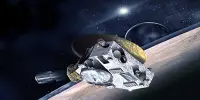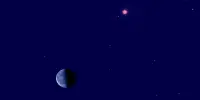Researchers are examining the data in the wake of several high-profile UFO sightings, which are currently the subject of a Pentagon investigation, and they are coming to the conclusion that the figures don’t add up.
Sean Kirpatrick, director of the Pentagon’s All-domain Anomaly Resolution Center, and renowned Harvard astronomer Avi Loeb have recently focused on “highly maneuverable” Unidentified Aerial Phenomena (UAP), or UFOs.
Their results, which were reported in a study that has not yet undergone peer review, are both startling and depressing.
The article spends a lot of time speculating about how and why an extraterrestrial intelligence, or possibly just its self-propagating probes, would wind up in our backyard, but its key findings on the physics underlying the sightings are more significant.
Kirpatrick and Loeb focused on the friction that should have been produced between a fast-moving UFO and the air and water it should have been in contact with, similar to that famously shown in the first videos the Pentagon published that perplexed the Navy airmen who witnessed them.
A “bright optical fireball” should be produced by the resulting friction, so taken at face value, “highly maneuverable” UFO sightings do appear to defy the rules of physics.
This fireball should have also left a radio signal that could be picked up on the radar, but none of these signatures were ever found.
Does this imply that the UFOs are made of a frictionless substance unknown to humans? That is much less probable. The explanation offered by Kirpatrick and Loeb is much more commonplace: the equipment used to monitor the UFOs was insufficient.
The absence of all these signatures could indicate inaccurate distance readings (and subsequently, derived velocity) for single-site sensors, the authors write.
The typical UAP sightings are too far away to obtain a sharp image of the object, and the absence of range information makes it difficult to determine the object’s motion.
Sadly, if that’s the explanation offered by Loeb, whose theories are regarded by some scientists as a little “out there” similar to Fox Mulder in “The X-Files,” it’s particularly unlikely that an advanced extraterrestrial civilization will come to Earth.
The Harvard astronomer’s audacious claims and equally audacious efforts to ascertain whether or not aliens have ever paid Earth a visit have consistently drawn criticism, made headlines, and generally sparked debate.
Famously, Loeb has asserted that there may be up to four quintillion extraterrestrial spaceships in our solar system and that the enigmatic asteroid known as ‘Oumuamua may have been an alien probe.
Therefore, even though Loeb generally thinks the truth is out there, it appears that with regard to some of these “highly maneuverable” sightings, he believes we need more trustworthy and precise measurements before drawing any firm conclusions.
According to Loeb and Kirpatrick, there are some practical restrictions on the interpretation of observed and measured data as a consequence of physics-based constraints “if some observed UAP are of extraterrestrial provenance.”














